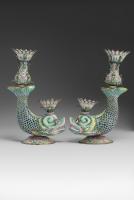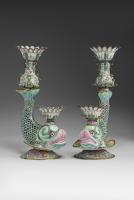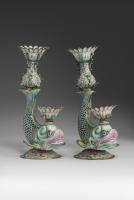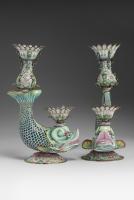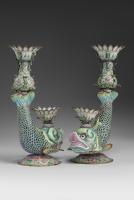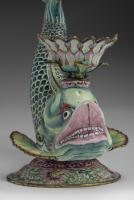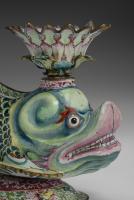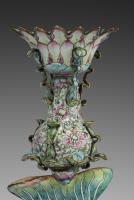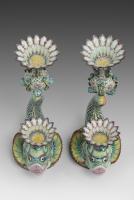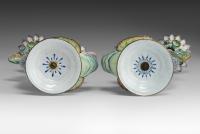
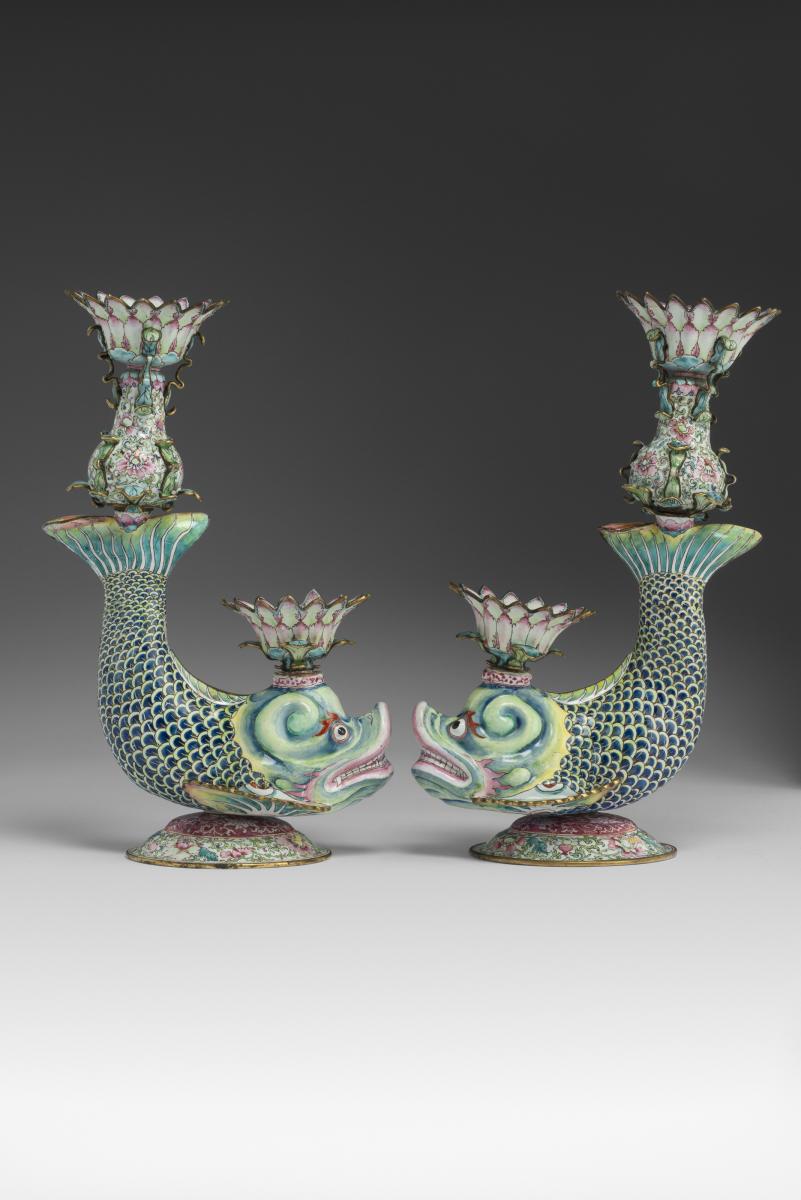
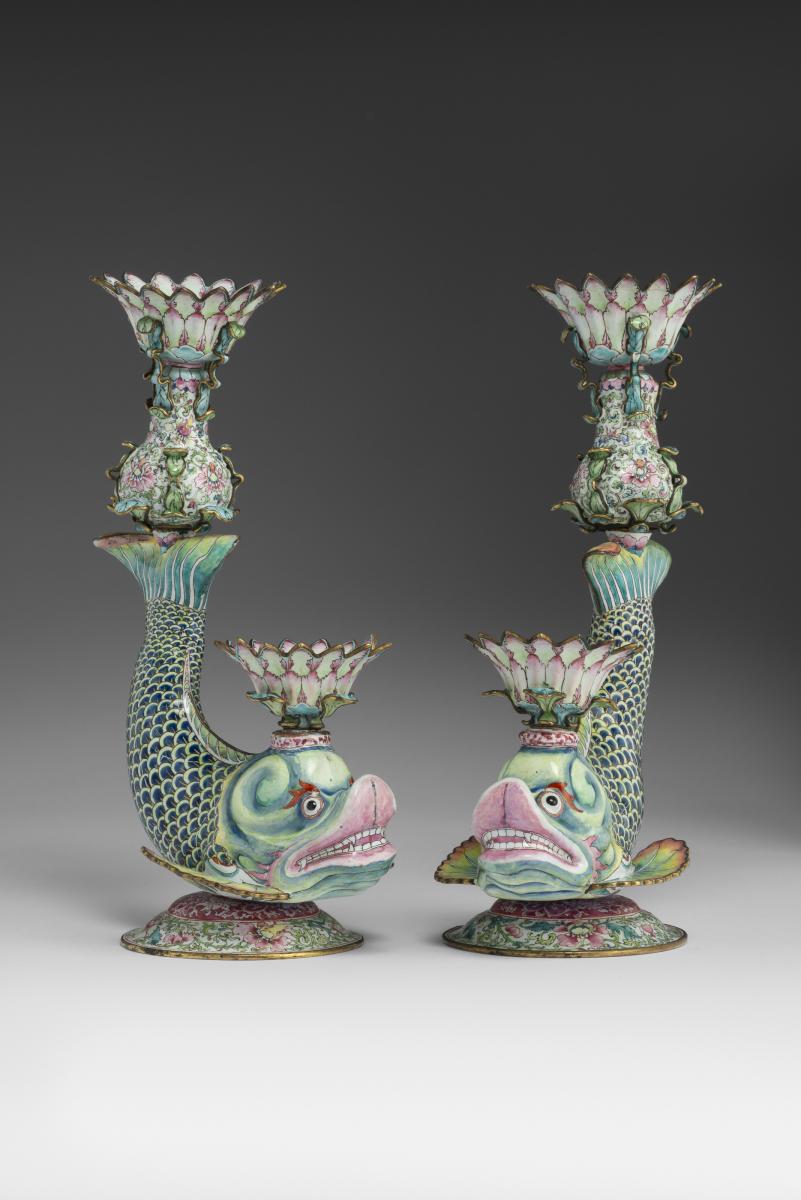
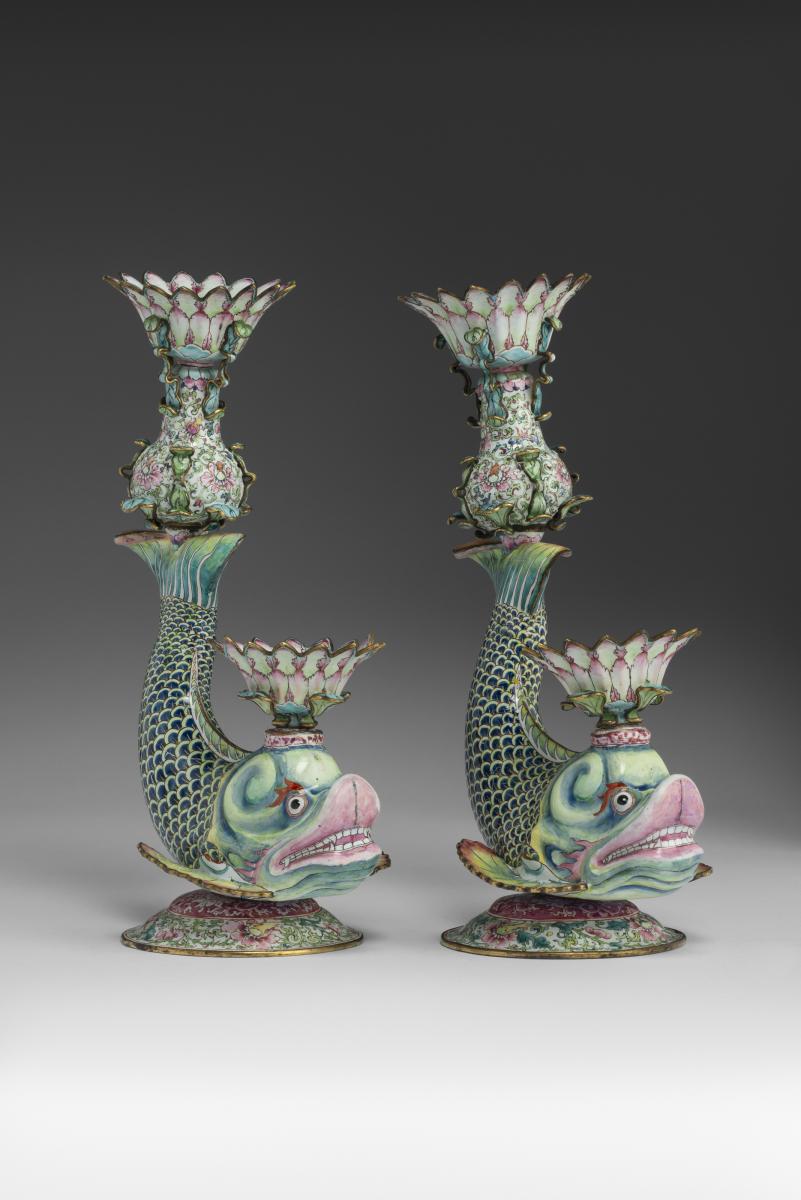
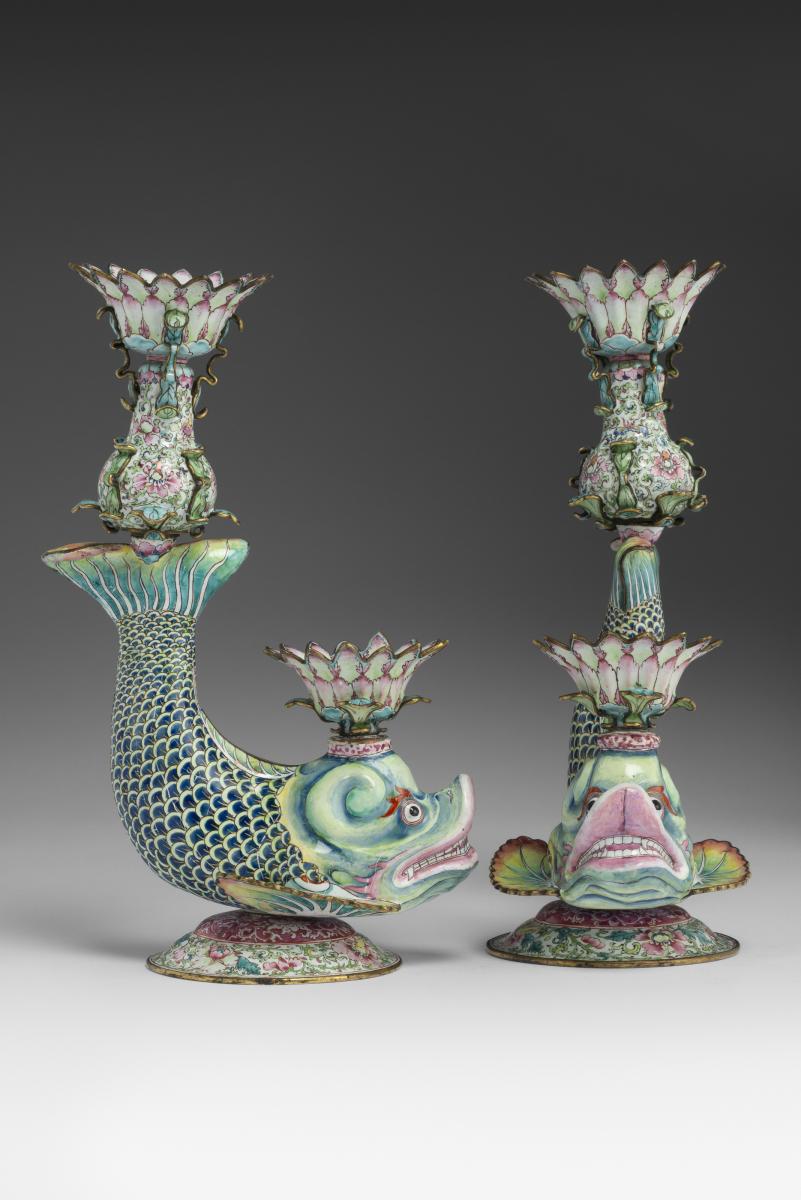
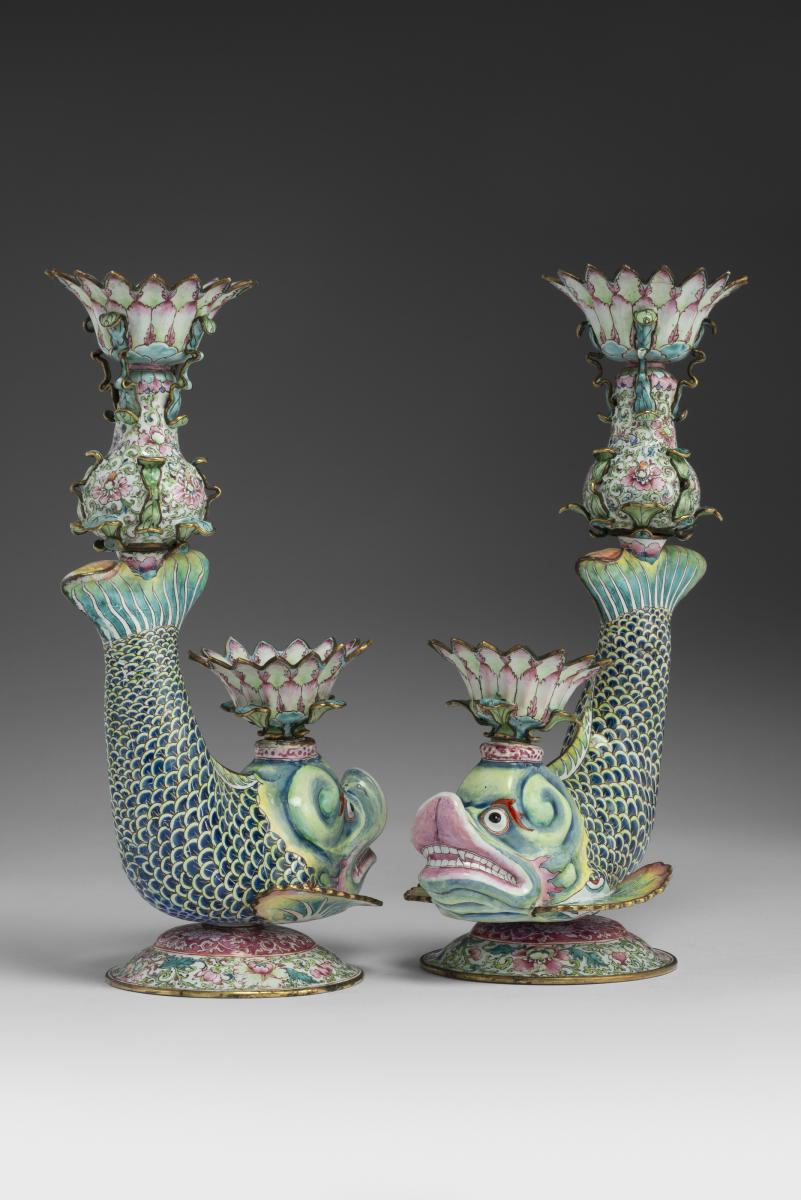
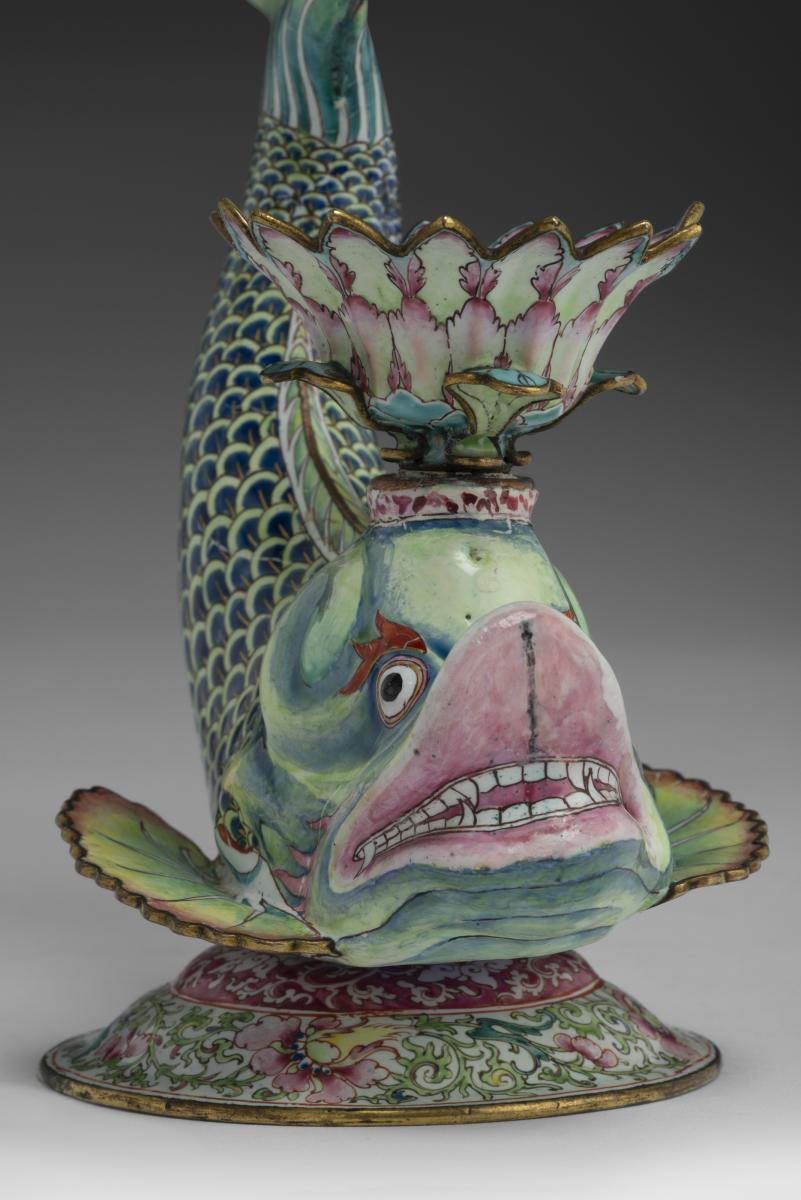
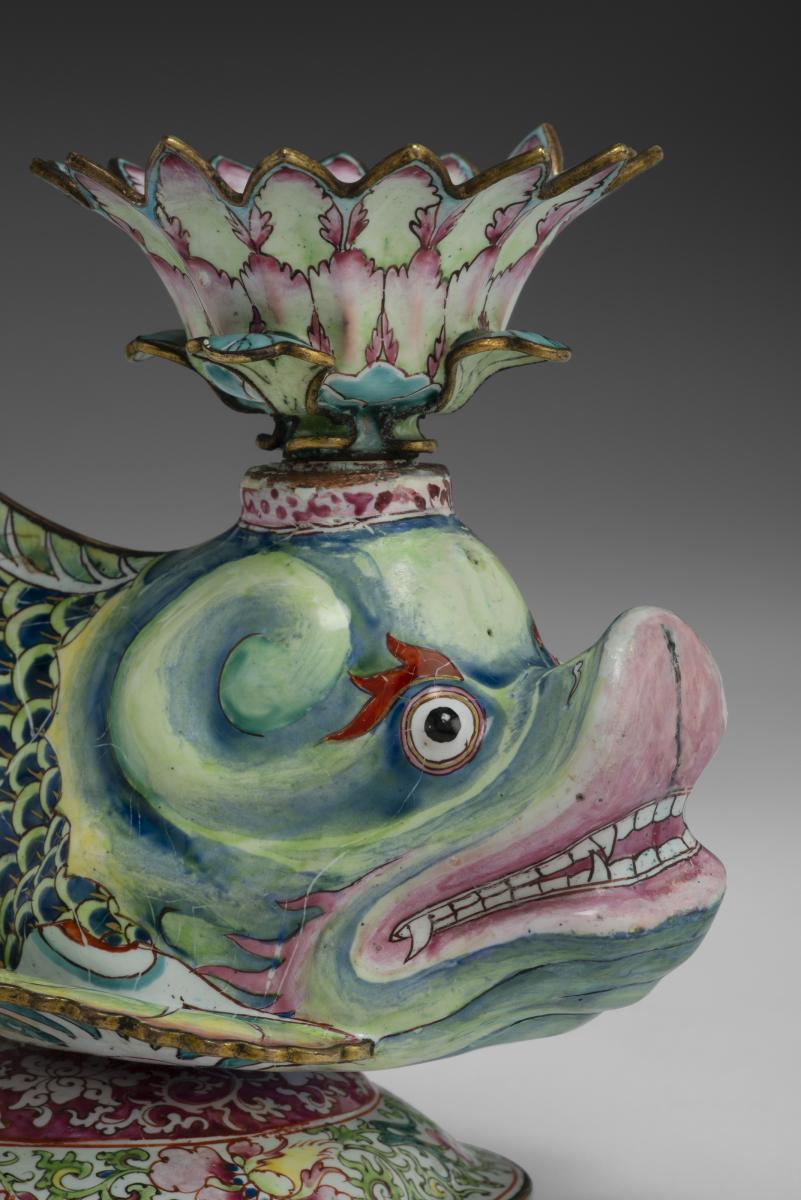
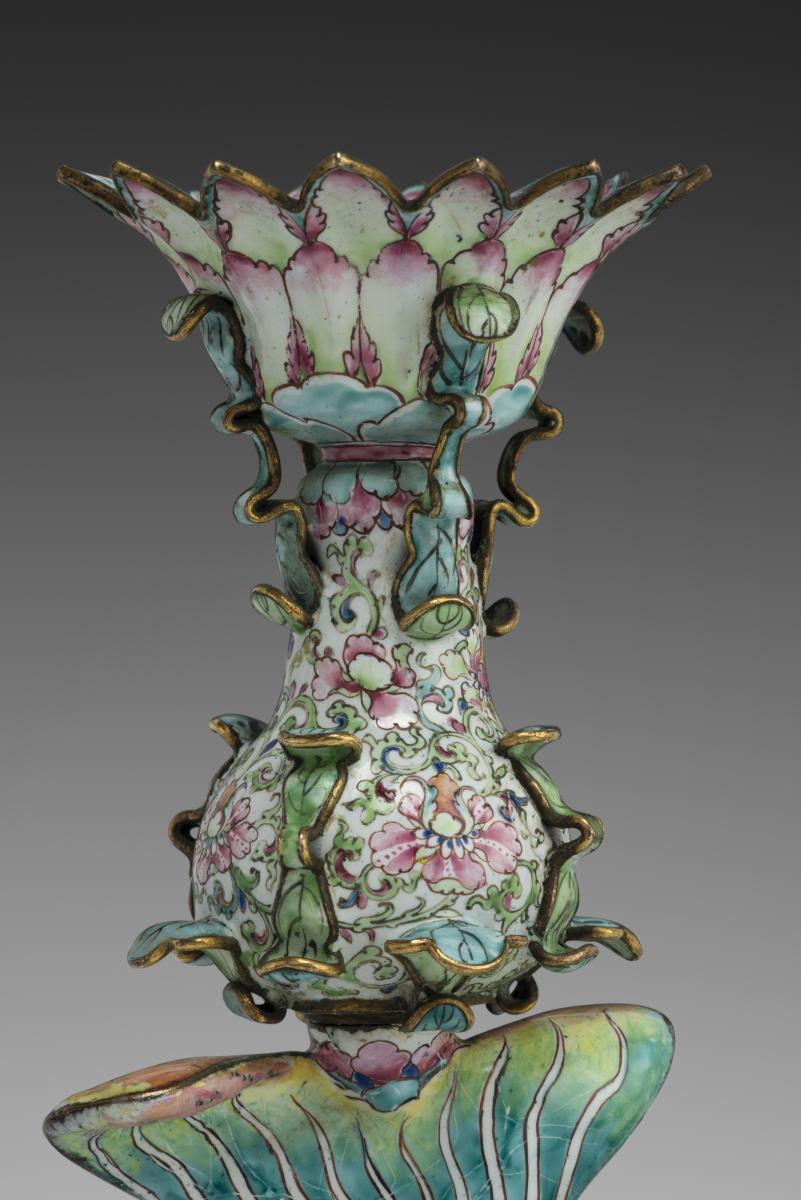
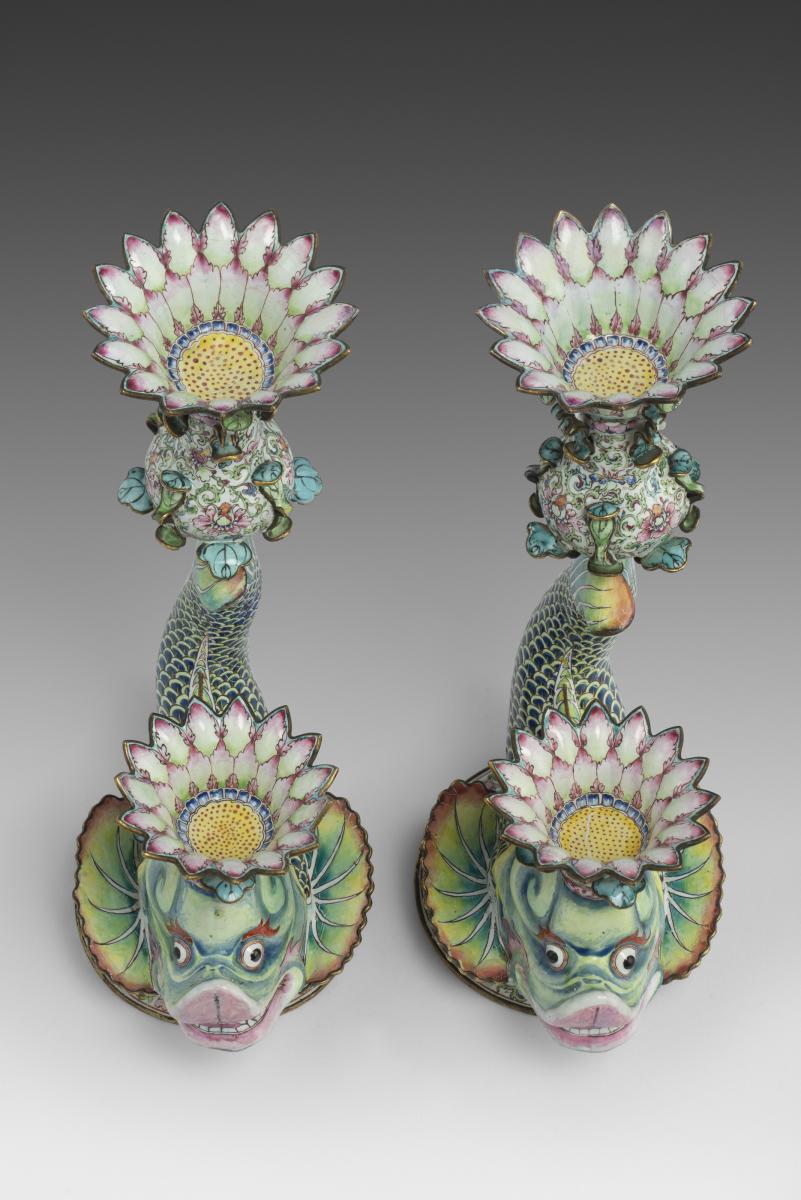
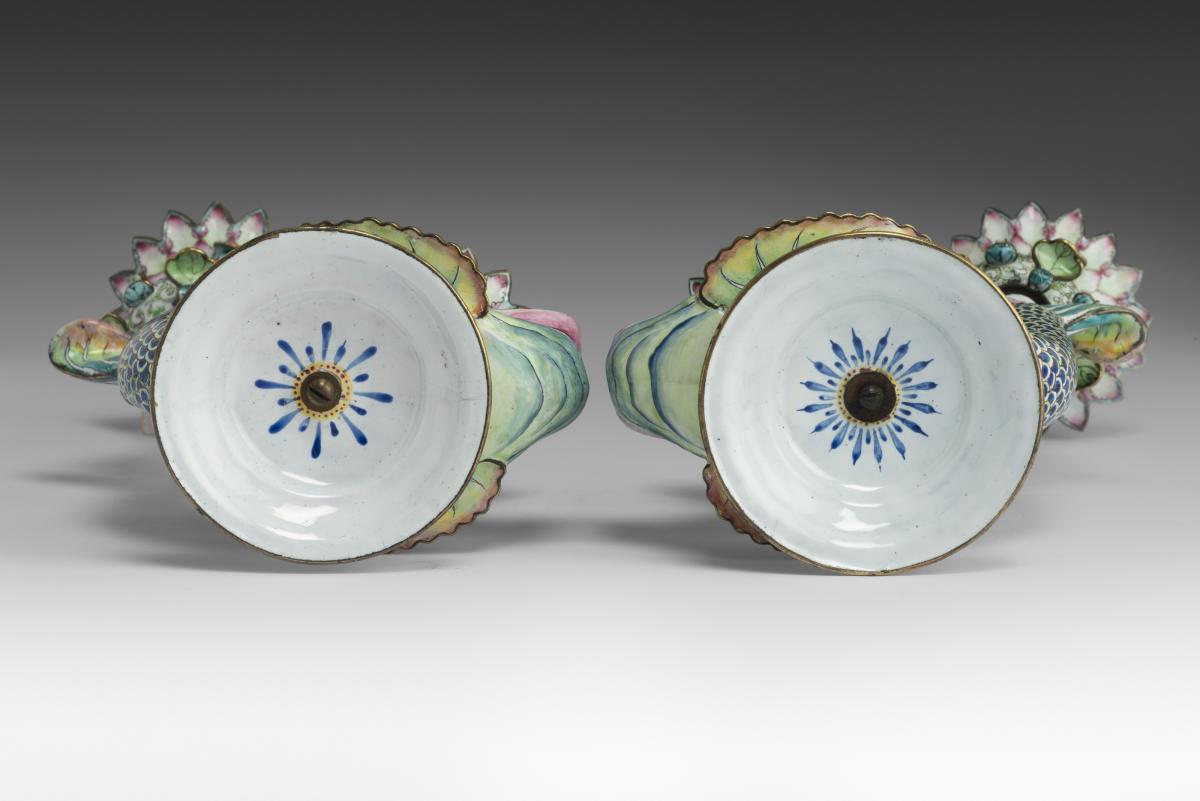
This object includes complimentary, Insured Shipping / Delivery within the UK
This object is eligible for a Certificate of BADA Provenance
The BADA Standard
- Since 1918, BADA has been the leading association for the antiques and fine art trade
- Members are elected for their knowledge, integrity and quality of stock
- Our clients are protected by BADA’s code of conduct
- Our dealers’ membership is reviewed and renewed annually
- Bada.org is a non-profit site: clients deal directly with members and they pay no hidden fees
Pair of Chinese Painted Enamel 'Pièces de surtout' in the form of Dolphins.
Qing Dynasty, Yongzheng / Qianlong, Circa 1740.
Painted enamels on copper with gilt highlights on the enamel and gilt copper, with minor restorations to the enamel.
Modelled in the form of dolphins or makara with their bodies curving upwards towards the tail-fins and brightly painted in the famille rose palette with blue scales, greenish-yellow heads and pink and white mouths, baring sharp teeth. Their large heads with bulging eyes are set above projecting pectoral fins, all worked in repoussé; the heads and tails support gourd-shaped vessels painted with flowerheads and foliate scrolls, and are applied with protruding leaves, all supporting wax-pans in the form of open lotus blossoms, and raised on circular, domed bases.
The design of these pieces must have been taken from 17th century French glass dolphins made by Bernard Perrot (1619-1709), who worked in the Royal glass workshops of Orléans in the reign of Louis XIV. Perrot’s candlesticks can be found in the Musée du Louvre, Paris, accession number OA12170.
These rare examples of Chinese painted enamel copperware appear to be unrecorded, although the lotus blossom bowls are known from the lion examples referenced above. The bowls are also closely related to the bowls on a four-branch ‘candelabrum’ illustrated in ‘China of all Colours – Painted Enamels on Copper’ (Luisa Vinhais and Jorge Welsh, London 2015, cat. No. 72, p. 246-9). See J A Lloyd Hyde, Chinese Painted Enamels, the Chinese Institute in America, New York, no.55, p.39, for a closely related pair of ‘Pièces de surtout’ with their bodies in the form of lions, rather than dolphins, which were sold by Christie’s London, 17th September 2008, lot 203.
There is an impressive pair of 12 branch chandeliers in Rosenborg Castle in Copenhagen, which was commissioned in Canton by the supercargo Lintrup of the Danish Asiatic Company in 1740, and illustrated by M Beurdeley, Chinese Furniture, p.154, fig.207. Interestingly the chandeliers exhibit candle nozzles clearly intended to hold candles. The bowls on these dolphins (as with Perrot’s prototypes) do not appear prepared to hold candles; together with the lion pair mentioned above, they appear to be more likely to be pièces de surtout which, like the glass pieces Perrot that inspired them, would perhaps have formed part of a large group of items of tableware and been used to present sweetmeats and glazed fruits.
Although there is no direct evidence that Perrot himself ever visited China, Emperor Kangxi of the Qing Empire (reigned 1662-1722), was fascinated by Western glassmaking techniques. It is recorded that in 1684 and 1689, missionaries presented Kangxi with some fine European glassware, such as perfume bottles and glass vases, which the Emperor loved. In 1684, a Chinese missionary born in Nanjing, Shen Fuzong, and a Belgian missionary, Philippe Couplet, were commissioned by the Kangxi to travel to the Palace of Versailles in France to find a missionary specializing in science, technology and the arts. During their stay, they were hosted by the French court glassmakers and were exposed to a beautiful and varied collection of European glass, among which Perrot's designs must have been found. In a letter written in 1691, the French priest Jean-François Gerbillon wrote that the Emperor of China wished to employ a French craftsman specialising in glass and crystal. With the help of European glass designers, a royal glass factory was established in 1696 in the Qing court. The majority of the Chinese glass craftspeople came from the southern port city of Canton.
It is interesting to note the local innovations made by Cantonese craftsmen as they were reproducing Perrot’s design in enamelled copper. There is clear influence of the decoration of Chinese porcelain with the lotus flower motifs, and also the form of the dolphins. In the hands of the Cantonese craftsmen, the dolphin took on a more auspicious meaning: the Chinese designers transformed them into "ao"鳌, a legendary creature with the head of a dragon and the body of a fish. They have large round eyes, stylised serrated eyebrows and animal-like curled ears - very close to the Chinese dragon or qilin. In ancient China, the ao symbolised the ability to excel in the national imperial examinations and reap the rewards of a prosperous future. The ao with the standing tail was designed as a roof charm in traditional Chinese architecture to protect the family from misfortune.
In his essay ‘Chinese Enamelled Copper for Export’ (published in ‘China of All Colours’ op. cit.) Christian J.A. Jorg notes that ‘painted enamels on copper were never trade items for the European companies operating in Canton.’ It was, in fact illegal to export copper altogether so examples of this enamelled copperware are rare. Jorg quotes a letter from an employee of the Dutch East India Company written in 1766; ‘no copper, and therefore enamelled copper either can be exported, unless it is smuggles. And our Lords and Masters have repeatedly ordained that they don’t want to resort to such practices.’ As no other examples of this dolphin model seem to have ever emerged, it is likely that they were a private commission and perhaps unique.
We are grateful to Yixin Xu for her assistance with research for this description.
Dimensions
Height 24 cmThis object includes complimentary, Insured Shipping / Delivery within the UK
This object is eligible for a Certificate of BADA Provenance
Stock number
7071The BADA Standard
- Since 1918, BADA has been the leading association for the antiques and fine art trade
- Members are elected for their knowledge, integrity and quality of stock
- Our clients are protected by BADA’s code of conduct
- Our dealers’ membership is reviewed and renewed annually
- Bada.org is a non-profit site: clients deal directly with members and they pay no hidden fees


